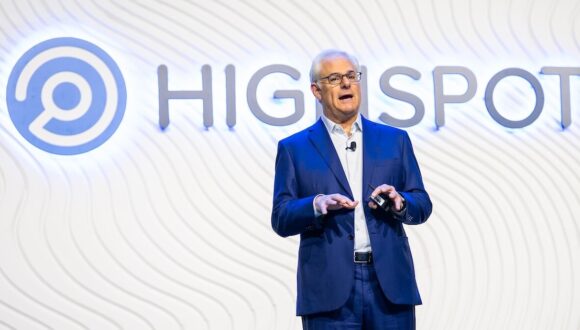The go-to-market landscape is evolving fast.
Modern buyers are demanding more personalised experiences, revenue targets are rising, and efficiency has become more critical than ever. To adapt to these pressures, enablement teams are rethinking how they drive impact. So, how are organisations evolving to succeed in this high-pressure environment?
Based on our survey of 350 global go-to-market professionals, the answer is clear: They’re leveraging AI to power go-to-market execution. The State of Sales Enablement Report 2025 reveals that AI is here to stay, as 90% of companies have either implemented AI or plan to do so this year—a clear sign that AI is no longer optional. Instead, it’s becoming a core part of modern enablement strategies.
This year’s findings uncover more than a few trendlines—they provide a playbook for teams looking to execute faster, smarter, and better. From streamlining workflows to transforming training and coaching and personalising buyer engagement, here are the three AI-powered moves high-performing organisations are making right now—and why you should follow their lead.
Streamline Workflows to Drive Successful GTM Initiatives
Disconnected tools and siloed teams create more than inefficiencies—they create confusion. Today, just 10% of organisations are very effective at driving go-to-market initiatives that deliver business results. When go-to-market teams aren’t aligned, execution suffers. That’s why enablement leaders are focusing on unifying workflows to eliminate silos and streamline consistent performance.
By connecting the tech stack through integrations and consolidation, teams can more easily define, execute, and optimise their go-to-market initiatives. Having a well-integrated tech stack streamlines workflows and improves the user experience. When coupled with AI, it eliminates the need for manual data entry and allows for immediate insights into how your go-to-market strategies are landing. The result: a go-to-market motion that can more consistently and effectively produce business results.
TIP: Remove silos within your go-to-market teams by consolidating and integrating your tech stack where possible. A more unified approach to execution can improve the rep experience and drive more operational efficiency in your organisation. Companies with well-integrated enablement tech stacks are 42% more likely to increase sales productivity.
Layer AI into Training and Coaching to Improve Performance
Sales training and coaching are essential programmes to improve performance, but they’re notoriously time-consuming to create and hard to scale. Traditional programmes often suffer from low engagement, inconsistent feedback, and minimal results. These are common challenges, as one in two organisations (55%) struggles with either sales training or coaching. This year, high-performing organisations are leaning on AI to make these programmes more scalable, personalised, and impactful.
While specific goals may vary across organisations, training and coaching consistently aim to strengthen execution, both at the individual rep level and across the broader go-to-market organisation. Whether it’s creating tailored lessons based on rep performance or analysing call recordings to recommend next steps, AI is helping teams close the gap between learning and behaviour change. Not only do trainers and managers gain time back to focus on more strategic work, but you can also develop more effective training and coaching with less lift.
TIP: Consider incorporating AI into your training and coaching programmes. Those who use AI for training are 35% more likely to increase average deal size, and those using AI in coaching are 20% more likely to improve revenue outcomes. The opportunity with AI isn’t just to save time—it’s to grow topline results.
Scale Personalised, Digital Experiences to Engage the Modern Buyer
In today’s noisy, digital world, traditional forms of outreach fall flat. With AI now shaping the early stages of the buying process, nearly half of companies are struggling with customer experience (47%) and buyer engagement (41%). Buyers interact with human reps much less often today, and they expect their data to be kept secure. Every connection counts—and needs to be meaningful, tailored, and compliant.
While AI handles the busywork, reps can focus on delivering more impactful, high-value interactions. From customised messaging to dynamic microsites, personalised digital experiences have become the standard for modern selling. These moments aren’t just memorable—they build trust and help deals move forward, all without sacrificing quality, consistency, or security.
TIP: Leverage digital rooms to create more personalised, scalable experiences for today’s buyers. These customisable microsites help reps differentiate, build buyer confidence, and maintain a high level of security. In fact, nearly 50% of high-performing organisations—those that improved outcomes such as win rate and revenue in the last year—are investing in digital rooms to enhance buyer engagement.
The Next Era of Enablement Is Here
The message is clear: AI is not a shiny new tool—it’s delivering measurable impact across the entire go-to-market organisation. To meet the demands of today’s business landscape, high-performing teams are using AI to enhance the impact of enablement, which 84% of executives already recognise as a driver of performance.
From aligning teams and accelerating rep performance to delivering engaging buyer experiences, AI-powered enablement is helping go-to-market teams operate more efficiently and effectively.
Ready to learn how you can accelerate business results with an AI-powered enablement strategy?
Download the full report here.
This blog post is part of Highspot’s research-backed blog series, Highspot Insights. With the help of our research teams, we provide data-driven best practices for sales enablement. If you have a topic you’d like to learn more about, please let us know. We’d love to hear from you.




